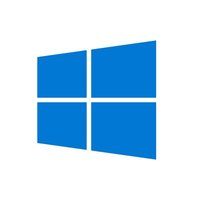Need advice about which tool to choose?Ask the StackShare community!
Fedora vs Manjaro: What are the differences?
Key Differences between Fedora and Manjaro
Frequently compared in the open-source community, Fedora and Manjaro are two popular Linux distributions. While both have strengths and weaknesses, they differ on various aspects. Here are the key differences between Fedora and Manjaro:
Package Management: Fedora utilizes the RPM package management system, whereas Manjaro uses the Arch Package Manager (Pacman). RPM offers a vast repository of software packages, allowing robust dependency management. On the other hand, Pacman provides a rolling release model and supports easy installation and removal of packages, making it more versatile for advanced users.
Release Cycle: Fedora has a strict release schedule, issuing a new version every six months. This ensures up-to-date software but may require more frequent upgrades. Meanwhile, Manjaro adopts a rolling release model, where users receive continuous updates rather than distinct versions. This provides a more consolidated and streamlined experience for users who prefer a frequently updated system.
Ease of Use: Fedora aims to be a reliable, general-purpose operating system and provides a user-friendly desktop experience. It focuses on stability and security, making it suitable for both beginners and advanced users. In contrast, Manjaro focuses on user-friendliness and accessibility, offering a highly intuitive interface out of the box. It emphasizes ease of installation, driver support, and a user-friendly customization experience.
Base Distribution: Fedora is based on Red Hat Linux and sponsored by the software giant Red Hat. It acts as a testing ground for future releases of Red Hat Enterprise Linux (RHEL). In contrast, Manjaro is based on Arch Linux but strives to enhance its user-friendliness and accessibility, catering to a wide range of user needs.
Community and Support: Fedora benefits from a large and active community, comprising developers, contributors, and users who actively contribute to its development. It also enjoys strong corporate backing from Red Hat. Manjaro, although relatively newer, has a growing and enthusiastic community that offers prompt support through forums, chats, and a friendly community atmosphere.
Target Audience: Fedora is typically preferred by developers, system administrators, and users seeking cutting-edge technologies on a stable platform. It is suitable for those who appreciate a balance between innovation and reliability. On the other hand, Manjaro targets casual users, gamers, and enthusiasts who desire a hassle-free Linux experience. It focuses on providing an easy-to-use, stable, and beginner-friendly environment.
In summary, Fedora and Manjaro differ in their package management systems, release cycles, user-friendliness, base distributions, community support, and target audiences. Fedora focuses on stability, security, and innovation while acting as a testing ground for future enterprise releases. Manjaro emphasizes user-friendliness, accessibility, and ease of customization.
I liked manjaro a lot, the huge support it has and the variety of tools it provides is just awesome. But due to its parent platform being Arch Linux it has bleeding-edge technology and that meaning, we get updated 'daily', and if we keep updating the system daily, due to the bugs in the recent updates the system sometimes used to crash, this made the OS really unstable. However, one can avoid such crashes using periodical and careful system/package updates. I now use LinuxMint which is based on Ubuntu, and this OS is completely stable with reliable(mostly tested) updates. And, since this OS is backed up by UBUNTU the concerns/questions one can encounter while using the OS can be easily rectified using the UBUNTU community, which is pretty good. Though this is backed up on UBUNTU it most certainly does NOT include the proprietary stuff of UBUNTU, which is on the bright side of the OS. That's it! Happy Computing.
Pros of Fedora
- Great for developers22
- Great integration with system tools10
- Represents the future of rhel/centos10
- Good release schedule9
- Reliable7
- Fast6
- Docker integration5
- Has SeLinux4
- Latest packages3
- Updated with Bleeding-edge software3
- Great for ops teams3
- Awesome community3
- Python distribution2
- Complies with International Standard2
Pros of Manjaro
- Good for beginners9
- AUR is huge8
- Very stable6
- Friendly community5
- Pacman is very fast3
- Highly customizable2
- Nice-looking bootloader2
Sign up to add or upvote prosMake informed product decisions
Cons of Fedora
- Bugs get fixed slowly from kernel side3
- Much less support from Wiki2
- Systemd2
- Boring2
- Less packages in official repository1
- A bit complicated1
- Learning curve for new users1
- Slightly difficult to install for beginners0
Cons of Manjaro
- Would you give your grandma linux?6
- Occasional freezes if wrongly configured3
- Not highly stable2
- High data requirement frequently1
































